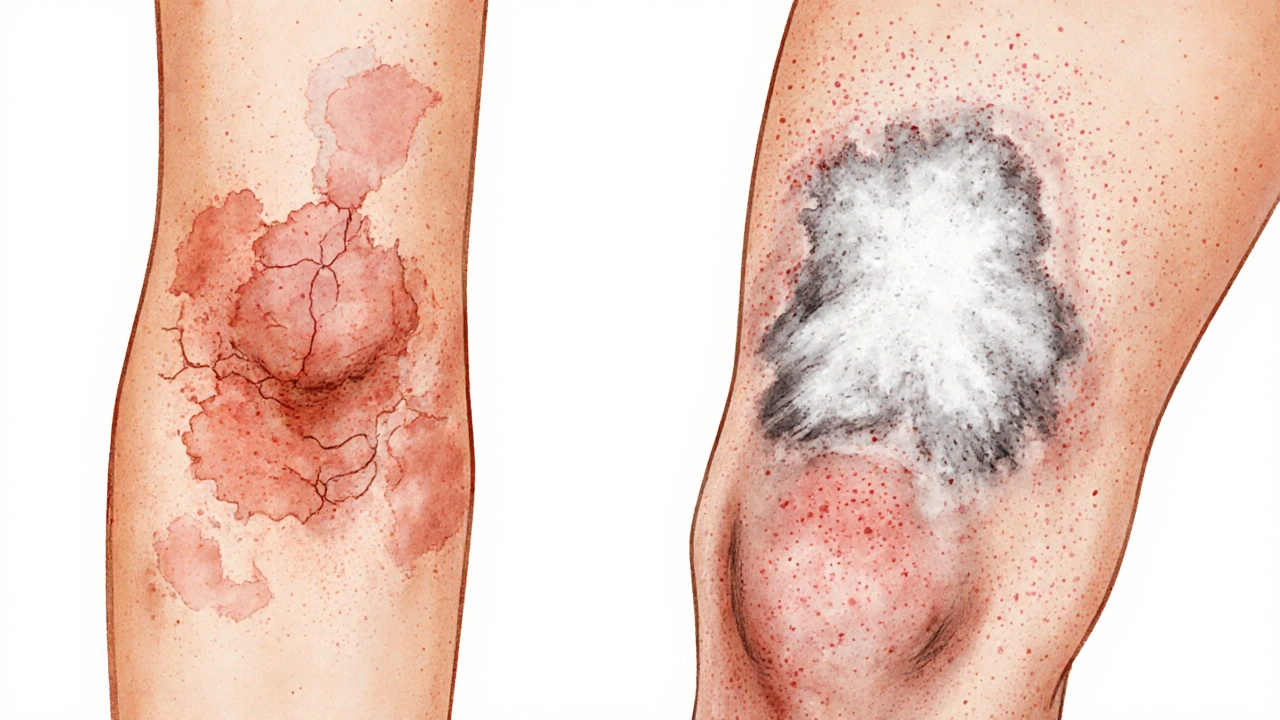When your skin starts flaking, itching, and turning red in patches, it’s easy to think it’s just dryness or an allergy. But if those patches are thick, scaly, and stubborn, you’re likely dealing with psoriasis rash, a chronic autoimmune condition where the immune system mistakenly attacks healthy skin cells, causing them to grow too fast and pile up on the surface. Also known as plaque psoriasis, this isn’t contagious—it’s your body’s own defenses turning against you. Unlike eczema, which often feels wet and oozing, psoriasis rash typically looks dry, raised, and covered in silvery scales. It commonly shows up on elbows, knees, scalp, and lower back, but can appear anywhere—even nails and joints.
The triggers are personal but predictable: stress, cold weather, infections like strep throat, certain medications (like lithium or beta-blockers), and even alcohol or smoking can make it flare. Once it starts, the cycle keeps going because your skin cells are rushing to the surface in days instead of weeks. That’s why over-the-counter moisturizers alone rarely fix it—you need to interrupt the immune response. Topical treatments like corticosteroids, vitamin D analogs, and coal tar are first-line options, but if the rash covers more than 5% of your body or affects your quality of life, you might need light therapy or systemic drugs. Biologics, which target specific parts of the immune system, have changed the game for many people, offering long-term control where nothing else worked.
It’s not just about clearing the skin—it’s about managing the whole picture. People with psoriasis rash are at higher risk for psoriatic arthritis, heart disease, and depression. That’s why treatment isn’t just about creams. It’s about lifestyle, mental health, and finding what sticks for you. Some swear by oatmeal baths and omega-3s. Others need monthly injections. There’s no one-size-fits-all, but the good news? There are more tools now than ever before. Below, you’ll find real comparisons of treatments, what works for different body types, and how to avoid common mistakes that make flare-ups worse.

Learn how to tell eczema and psoriasis apart by their rash appearance - location, texture, scaling, and how they look on different skin tones. Key differences that help avoid misdiagnosis.
read more